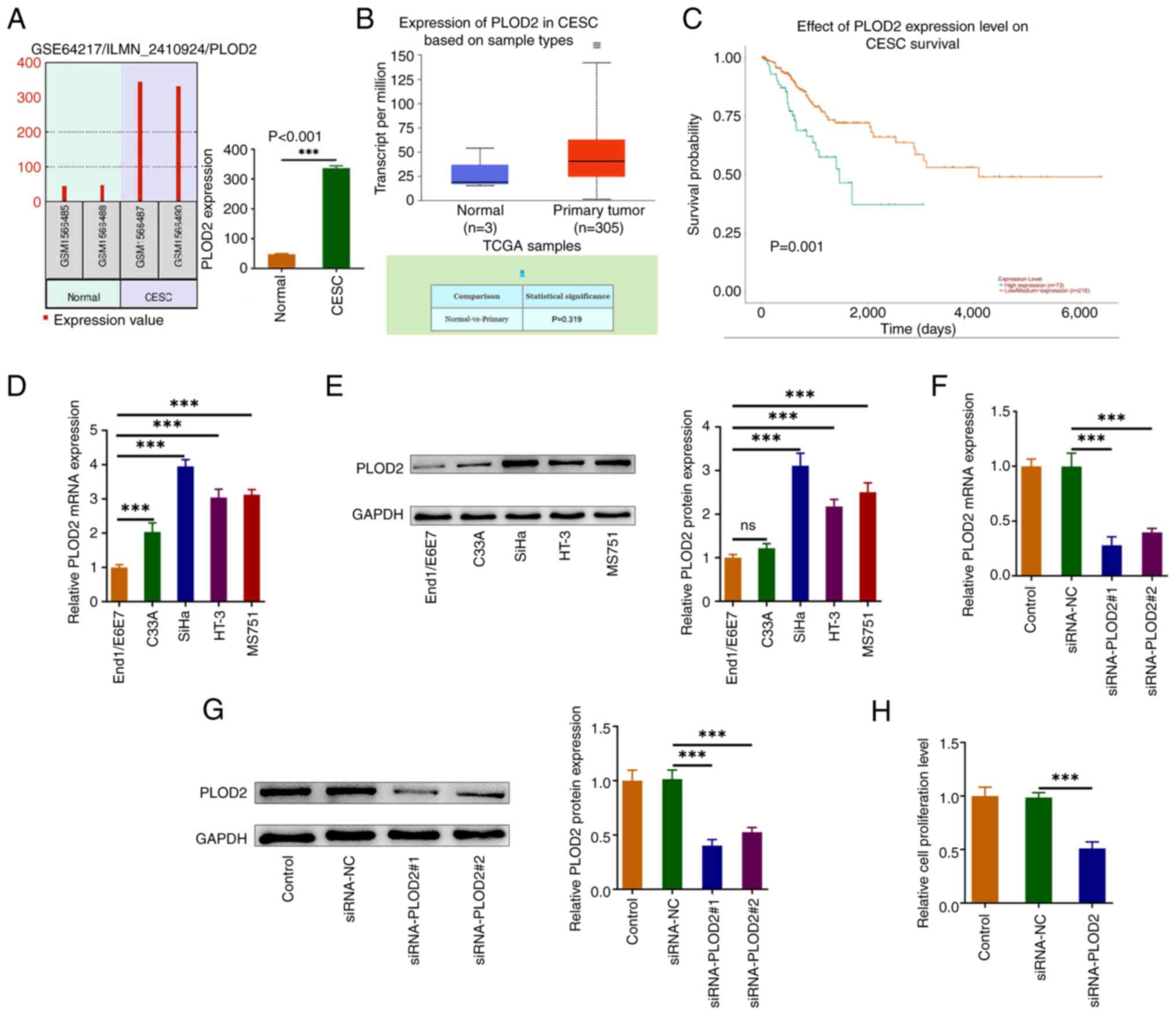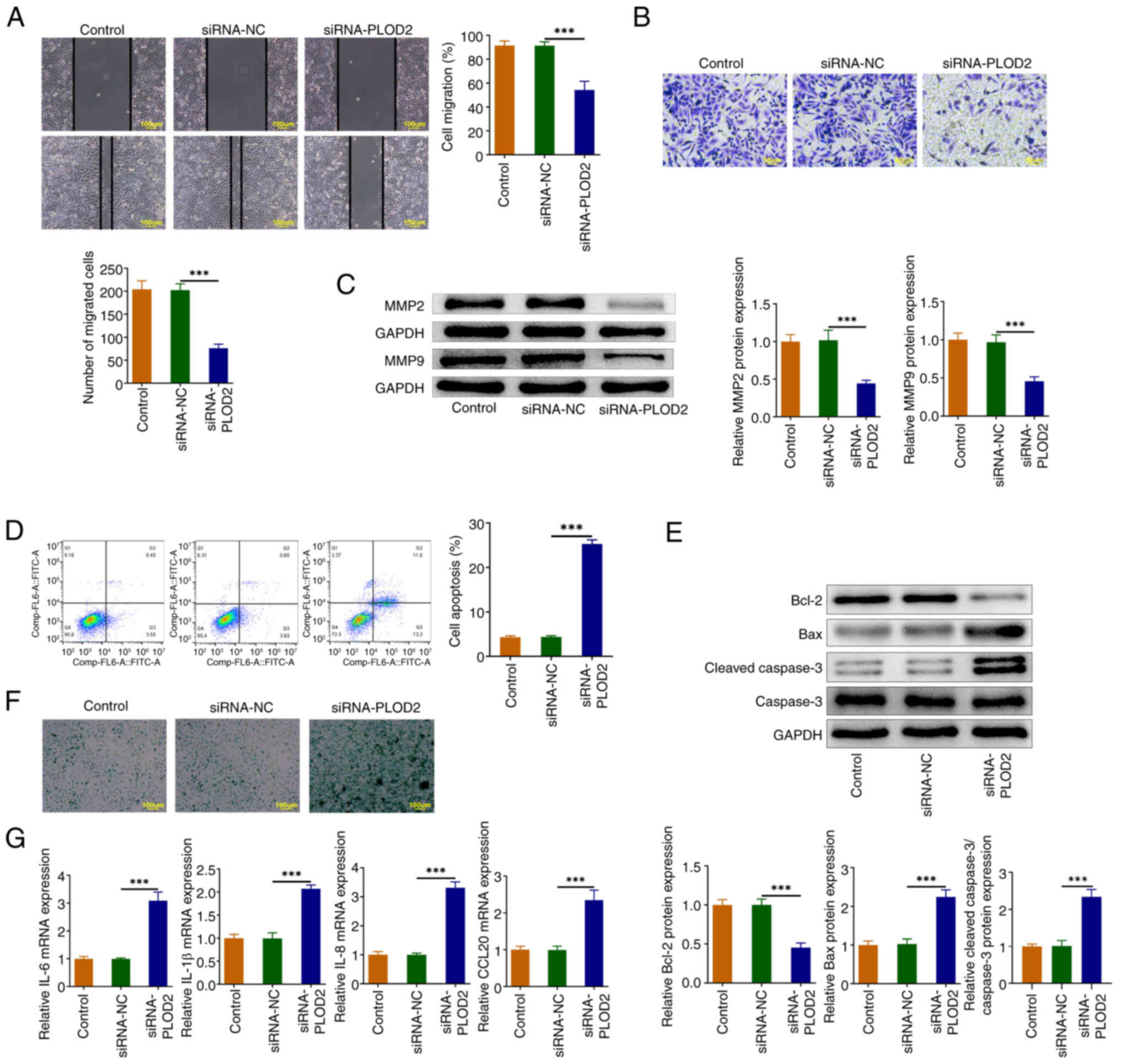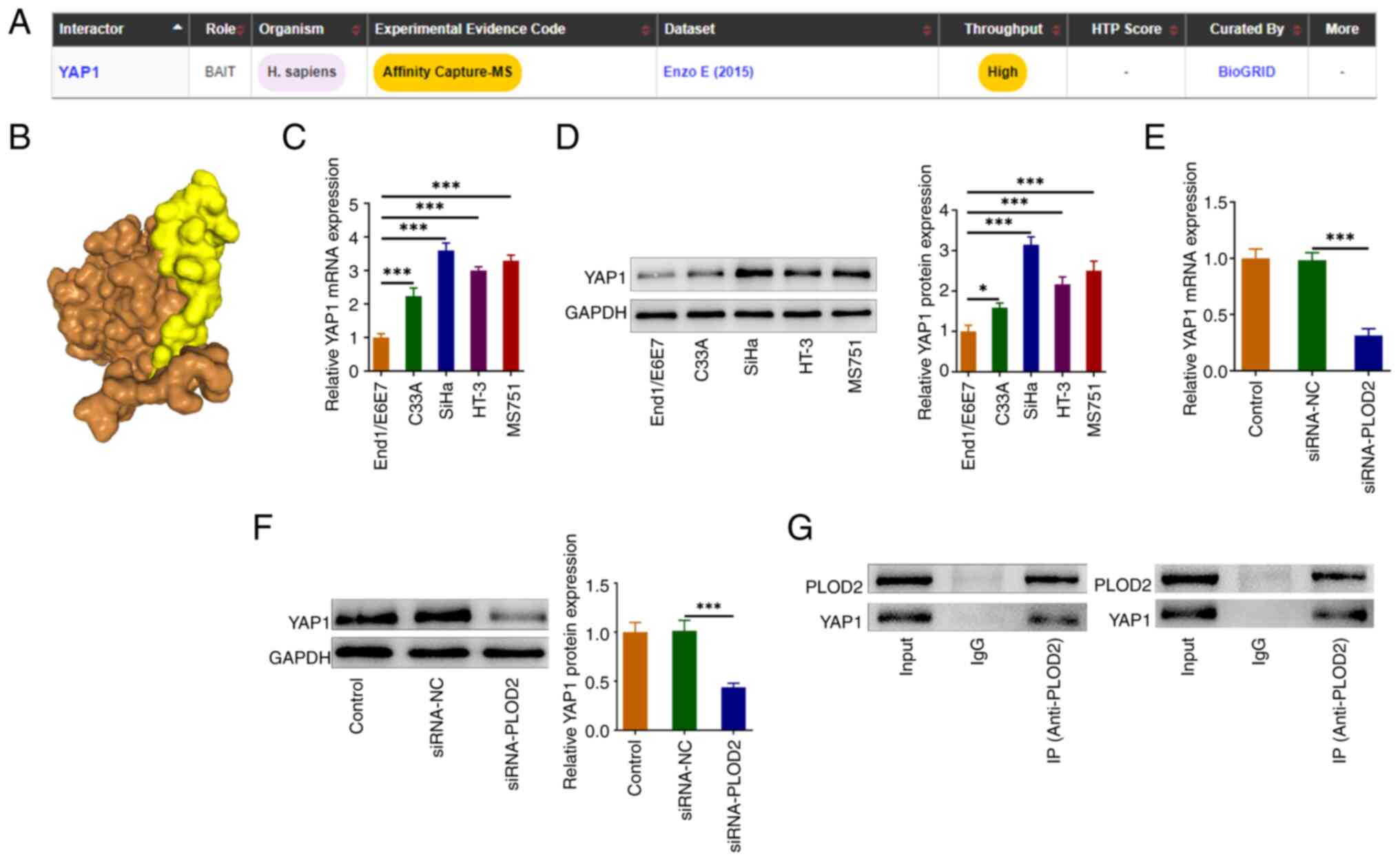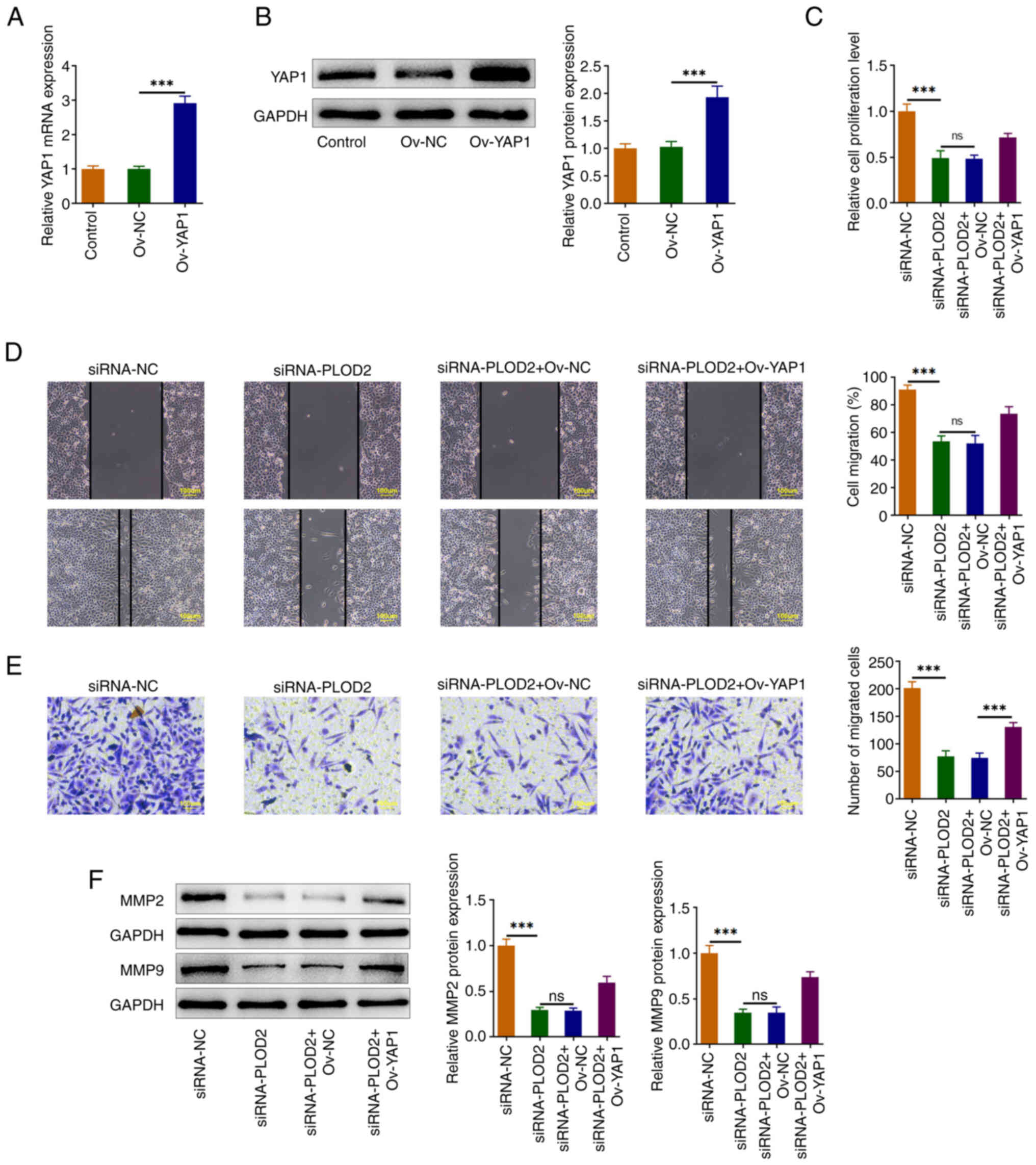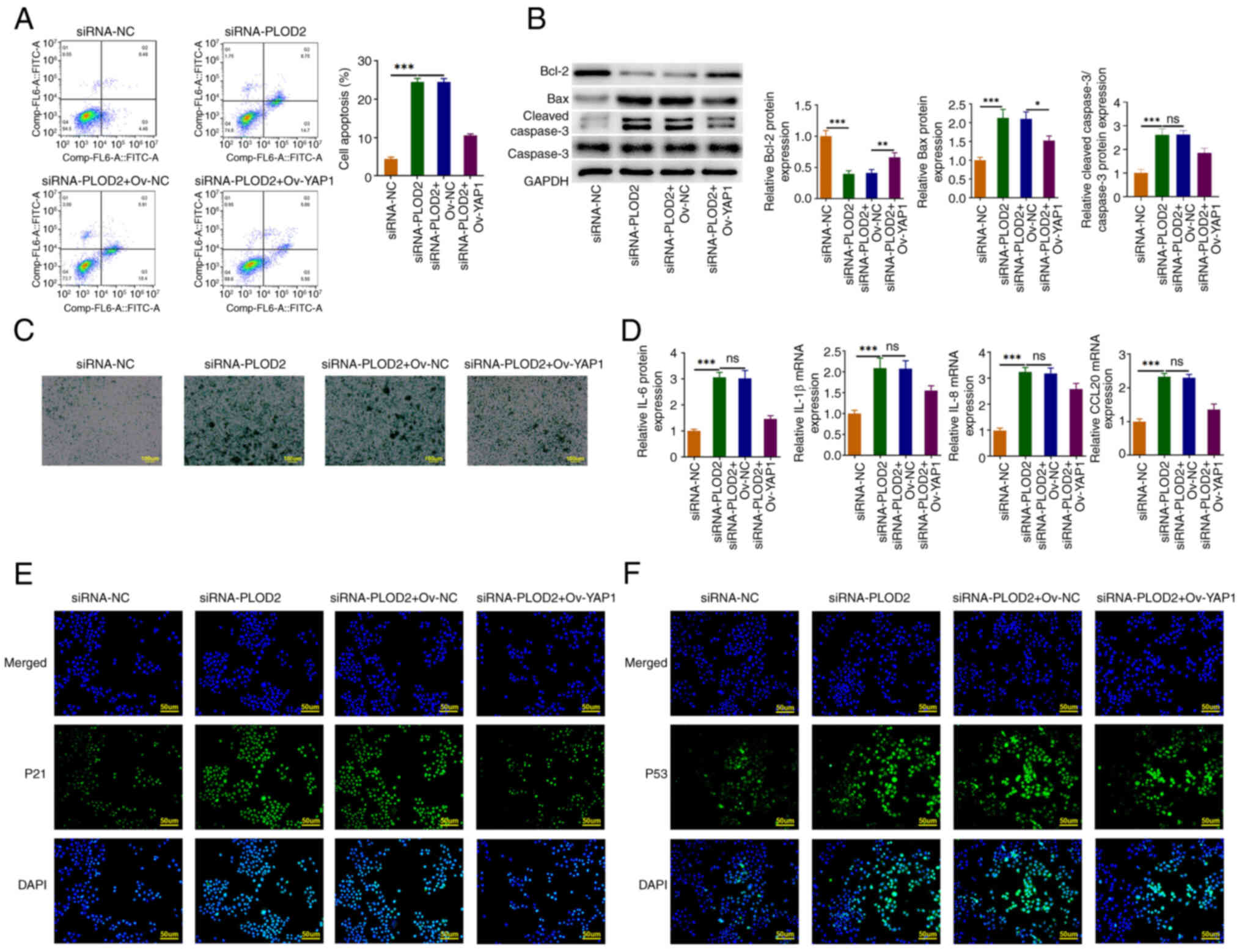|
1
|
Chatterjee K, Mukherjee S, Vanmanen J,
Banerjee P and Fata JE: Dietary polyphenols, resveratrol and
pterostilbene exhibit antitumor activity on an HPV E6-positive
cervical cancer model: An in vitro and in vivo analysis. Front
Oncol. 9:3522019. View Article : Google Scholar : PubMed/NCBI
|
|
2
|
Romli R, Mohd Hashim S, Abd Rahman R, Chew
KT, Mohamad EMW and Mohammed Nawi A: Understanding cervical cancer
screening motivations from women and health practitioners'
perspectives: A qualitative exploration. Gynecol Oncol Rep.
52:1013492024. View Article : Google Scholar : PubMed/NCBI
|
|
3
|
Alqarni SS, Alshehri SM, Alkhateeb MA and
Alsudias LS: Assessing Saudi women's awareness about human
papillomavirus (HPV) and their susceptibility to receive the
vaccine. Hum Vaccin Immunother. 20:23950862024. View Article : Google Scholar : PubMed/NCBI
|
|
4
|
Singh D, Vignat J, Lorenzoni V, Eslahi M,
Ginsburg O, Lauby-Secretan B, Arbyn M, Basu P, Bray F and
Vaccarella S: Global estimates of incidence and mortality of
cervical cancer in 2020: A baseline analysis of the WHO global
cervical cancer elimination initiative. Lancet Glob Health.
11:e197–e206. 2023. View Article : Google Scholar : PubMed/NCBI
|
|
5
|
Jensen JE, Becker GL, Jackson JB and
Rysavy MB: Human papillomavirus and associated cancers: A review.
Viruses. 16:6802024. View Article : Google Scholar : PubMed/NCBI
|
|
6
|
Sung H, Ferlay J, Siegel RL, Laversanne M,
Soerjomataram I, Jemal A and Bray F: Global cancer statistics 2020:
GLOBOCAN estimates of incidence and mortality worldwide for 36
cancers in 185 countries. CA Cancer J Clin. 71:209–249. 2021.
View Article : Google Scholar : PubMed/NCBI
|
|
7
|
US Preventive Services Task Force, . Curry
SJ, Krist AH, Owens DK, Barry MJ, Caughey AB, Davidson KW, Doubeni
CA, Epling JW Jr, Kemper AR, et al: Screening for cervical cancer:
US preventive services task force recommendation statement. JAMA.
320:674–686. 2018. View Article : Google Scholar : PubMed/NCBI
|
|
8
|
Meng Y, Chu T, Lin S and Wu P, Zhi W, Peng
T, Ding W, Luo D and Wu P: Clinicopathological characteristics and
prognosis of cervical cancer with different histological types: A
population-based cohort study. Gynecol Oncol. 163:545–551. 2021.
View Article : Google Scholar : PubMed/NCBI
|
|
9
|
Mayadev JS, Ke G, Mahantshetty U, Pereira
MD, Tarnawski R and Toita T: Global challenges of radiotherapy for
the treatment of locally advanced cervical cancer. Int J Gynecol
Cancer. 32:436–445. 2022. View Article : Google Scholar : PubMed/NCBI
|
|
10
|
Ran Z, Wu S, Ma Z, Chen X, Liu J and Yang
J: Advances in exosome biomarkers for cervical cancer. Cancer Med.
11:4966–4978. 2022. View Article : Google Scholar : PubMed/NCBI
|
|
11
|
Walboomers JM, Jacobs MV, Manos MM, Bosch
FX, Kummer JA, Shah KV, Snijders PJ, Peto J, Meijer CJ and Muñoz N:
Human papillomavirus is a necessary cause of invasive cervical
cancer worldwide. J Pathol. 189:12–19. 1999. View Article : Google Scholar : PubMed/NCBI
|
|
12
|
Pimple SA and Mishra GA: Global strategies
for cervical cancer prevention and screening. Minerva Ginecol.
71:313–320. 2019. View Article : Google Scholar : PubMed/NCBI
|
|
13
|
Rerucha CM, Caro RJ and Wheeler VL:
Cervical cancer screening. Am Fam Physician. 97:441–448.
2018.PubMed/NCBI
|
|
14
|
Zhou Y, Wang W, Tang J, Hu K and Zhang F:
Comparison of outcomes between early-stage cervical cancer patients
without high-risk factors undergoing adjuvant concurrent
chemoradiotherapy and radiotherapy alone after radical surgery. BMC
Cancer. 24:5482024. View Article : Google Scholar : PubMed/NCBI
|
|
15
|
Nuchpramool P and Hanprasertpong J:
Preoperative neutrophil-lymphocyte ratio and platelet-lymphocyte
ratio are not clinically useful in predicting prognosis in early
stage cervical cancer. Surg Res Pract. 2018:91629212018.PubMed/NCBI
|
|
16
|
Shi R, Zhang Z, Zhu A, Xiong X, Zhang J,
Xu J, Sy MS and Li C: Targeting type I collagen for cancer
treatment. Int J Cancer. 151:665–683. 2022. View Article : Google Scholar : PubMed/NCBI
|
|
17
|
Terajima M, Taga Y, Chen Y, Cabral WA,
Hou-Fu G, Srisawasdi S, Nagasawa M, Sumida N, Hattori S, Kurie JM,
et al: Cyclophilin-B modulates collagen cross-linking by
differentially affecting lysine hydroxylation in the helical and
telopeptidyl domains of tendon type I collagen. J Biol Chem.
291:9501–9512. 2016. View Article : Google Scholar : PubMed/NCBI
|
|
18
|
Piersma B and Bank RA: Collagen
cross-linking mediated by lysyl hydroxylase 2: An enzymatic
battlefield to combat fibrosis. Essays Biochem. 63:377–387. 2019.
View Article : Google Scholar : PubMed/NCBI
|
|
19
|
Sato K, Parag-Sharma K, Terajima M,
Musicant AM, Murphy RM, Ramsey MR, Hibi H, Yamauchi M and Amelio
AL: Lysyl hydroxylase 2-induced collagen cross-link switching
promotes metastasis in head and neck squamous cell carcinomas.
Neoplasia. 23:594–606. 2021. View Article : Google Scholar : PubMed/NCBI
|
|
20
|
Gong S, Wu C, Duan Y, Fu J, Wang Y, Wu H,
Zhang B, Tang J and Wu P: PLODs: Novel prognostic biomarkers and
potential immunotherapy targets for head and neck squamous cell
carcinoma. Heliyon. 9:e134792023. View Article : Google Scholar : PubMed/NCBI
|
|
21
|
Sekaran K, Varghese RP, Krishnan S, Zayed
H, El Allali A and Doss GPC: Dissecting crucial gene markers
involved in HPV-associated oropharyngeal squamous cell carcinoma
from RNA-sequencing data through explainable artificial
intelligence. Front Biosci (Landmark Ed). 29:2202024. View Article : Google Scholar : PubMed/NCBI
|
|
22
|
Li G, Wang X and Liu G: PLOD2 is a potent
prognostic marker and associates with immune infiltration in
cervical cancer. Biomed Res Int. 2021:55123402021.PubMed/NCBI
|
|
23
|
Liu R, He X, Bao W and Li Z: Enhancement
of HPV therapeutic peptide-based vaccine efficacy through
combination therapies and improved delivery strategies: A review.
Hum Vaccin Immunother. 20:23967102024. View Article : Google Scholar : PubMed/NCBI
|
|
24
|
Suhaila K, Mukherjee A, Maharjan B, Dhakal
A, Lama M, Junkins A, Khakurel U, Jha AN, Jolly PE, Lhaki P and
Shrestha S: Human papillomavirus, related diseases, and
vaccination: Knowledge and awareness among health care students and
professionals in Nepal. J Cancer Educ. 37:1727–1735. 2022.
View Article : Google Scholar : PubMed/NCBI
|
|
25
|
Sada M, Ohuchida K, Horioka K, Okumura T,
Moriyama T, Miyasaka Y, Ohtsuka T, Mizumoto K, Oda Y and Nakamura
M: Hypoxic stellate cells of pancreatic cancer stroma regulate
extracellular matrix fiber organization and cancer cell motility.
Cancer Lett. 372:210–218. 2016. View Article : Google Scholar : PubMed/NCBI
|
|
26
|
Wu B and Xi S: Bioinformatics analysis of
differentially expressed genes and pathways in the development of
cervical cancer. BMC Cancer. 21:7332021. View Article : Google Scholar : PubMed/NCBI
|
|
27
|
S S Shukla V, Khan GN, Eswaran S, Adiga D
and Kabekkodu SP: Integrated bioinformatic analysis of miR-15a/16-1
cluster network in cervical cancer. Reprod Biol. 21:1004822021.
View Article : Google Scholar : PubMed/NCBI
|
|
28
|
Li CJ, Chiu YH, Chang C, Chang YCI, Sheu
JJ and Chiang AJ: Acetyl coenzyme A synthase 2 acts as a prognostic
biomarker associated with immune infiltration in cervical squamous
cell carcinoma. Cancers (Basel). 13:31252021. View Article : Google Scholar : PubMed/NCBI
|
|
29
|
Oughtred R, Rust J, Chang C, Breitkreutz
BJ, Stark C, Willems A, Boucher L, Leung G, Kolas N, Zhang F, et
al: The BioGRID database: A comprehensive biomedical resource of
curated protein, genetic, and chemical interactions. Protein sci.
30:187–200. 2021. View
Article : Google Scholar : PubMed/NCBI
|
|
30
|
Dalby B, Cates S, Harris A, Ohki EC,
Tilkins ML, Price PJ and Ciccarone VC: Advanced transfection with
Lipofectamine 2000 reagent: Primary neurons, siRNA, and
high-throughput applications. Methods. 33:95–103. 2004. View Article : Google Scholar : PubMed/NCBI
|
|
31
|
Li Z, He H, Ren X, Chen Y, Liu W, Pu R,
Fang L, Shi Y, Liu D, Zhao J, et al: APOBEC3A suppresses cervical
cancer via apoptosis. J Cancer. 14:3429–3443. 2023. View Article : Google Scholar : PubMed/NCBI
|
|
32
|
Chen Q, Sun X, Luo X, Wang J, Hu J and
Feng Y: PIK3R3 inhibits cell senescence through p53/p21 signaling.
Cell Death Dis. 11:7982020. View Article : Google Scholar : PubMed/NCBI
|
|
33
|
Lv S, Wang Y, Xu W and Dong X: Serum
exosomal miR-17-5p as a promising biomarker diagnostic biomarker
for breast cancer. Clin Lab. 66:2020. View Article : Google Scholar
|
|
34
|
Zhong C, Ju G, Yang S, Zhao X, Chen J and
Li N: Total flavonoids of polygala fallax hemsl induce apoptosis of
human ectopic endometrial stromal cells through PI3K/AKT/Bcl-2
signaling pathway. Gynecol Obstet Invest. 88:197–213. 2023.
View Article : Google Scholar : PubMed/NCBI
|
|
35
|
Childs BG, Baker DJ, Kirkland JL, Campisi
J and van Deursen JM: Senescence and apoptosis: Dueling or
complementary cell fates? EMBO Rep. 15:1139–1153. 2014. View Article : Google Scholar : PubMed/NCBI
|
|
36
|
Ou HL, Hoffmann R, González-López C,
Doherty GJ, Korkola JE and Muñoz-Espín D: Cellular senescence in
cancer: From mechanisms to detection. Mol Oncol. 15:2634–2671.
2021. View Article : Google Scholar : PubMed/NCBI
|
|
37
|
Tzoneva R: Special issue ‘role of
apoptosis and cellular senescence in cancer and aging’. Int J Mol
Sci. 25:21032024. View Article : Google Scholar : PubMed/NCBI
|
|
38
|
Goodwin EC, Yang E, Lee CJ, Lee HW, DiMaio
D and Hwang ES: Rapid induction of senescence in human cervical
carcinoma cells. Proc Natl Acad Sci U S A. 97:10978–10983. 2000.
View Article : Google Scholar : PubMed/NCBI
|
|
39
|
Lan J, Zhang S, Zheng L, Long X, Chen J,
Liu X, Zhou M and Zhou J: PLOD2 promotes colorectal cancer
progression by stabilizing USP15 to activate the AKT/mTOR signaling
pathway. Cancer Sci. 114:3190–3202. 2023. View Article : Google Scholar : PubMed/NCBI
|
|
40
|
Xu Q, Kong N, Zhao Y, Wu Q, Wang X, Xun X
and Gao P: Pan-cancer analyses reveal oncogenic and immunological
role of PLOD2. Front Genet. 13:8646552022. View Article : Google Scholar : PubMed/NCBI
|
|
41
|
Li K, Niu Y, Li K, Zhong C, Qiu Z, Yuan Y,
Shi Y, Lin Z, Huang Z, Zuo D, et al: Dysregulation of PLOD2
promotes tumor metastasis and invasion in hepatocellular carcinoma.
J Clin Transl Hepatol. 11:1094–1105. 2023.PubMed/NCBI
|
|
42
|
Yang YS, Jin X, Li Q, Chen YY, Chen F,
Zhang H, Su Y, Xiao Y, Di GH, Jiang YZ, et al: Superenhancer drives
a tumor-specific splicing variant of MARCO to promote
triple-negative breast cancer progression. Proc Natl Acad Sci USA.
119:e22072011192022. View Article : Google Scholar : PubMed/NCBI
|
|
43
|
Zheng L, Qian B, Tian D, Tang T, Wan S,
Wang L, Zhu L and Geng X: FOXA1 positively regulates gene
expression by changing gene methylation status in human breast
cancer MCF-7 cells. Int J Clin Exp Pathol. 8:96–106.
2015.PubMed/NCBI
|
|
44
|
Liu T, Liu Y, Gao H, Meng F, Yang S and
Lou G: Clinical significance of yes-associated protein
overexpression in cervical carcinoma: The differential effects
based on histotypes. Int J Gynecol Cancer. 23:735–742. 2013.
View Article : Google Scholar : PubMed/NCBI
|
|
45
|
He C, Mao D, Hua G, Lv X, Chen X,
Angeletti PC, Dong J, Remmenga SW, Rodabaugh KJ, Zhou J, et al: The
Hippo/YAP pathway interacts with EGFR signaling and HPV
oncoproteins to regulate cervical cancer progression. EMBO Mol Med.
7:1426–1449. 2015. View Article : Google Scholar : PubMed/NCBI
|
|
46
|
He C, Lv X, Huang C, Angeletti PC, Hua G,
Dong J, Zhou J, Wang Z, Ma B, Chen X, et al: A Human
Papillomavirus-Independent Cervical Cancer Animal Model Reveals
Unconventional Mechanisms of Cervical Carcinogenesis. Cell Rep.
26:2636–2650. 2019. View Article : Google Scholar : PubMed/NCBI
|
|
47
|
Deng J, Zhang W, Liu S, An H, Tan L and Ma
L: LATS1 suppresses proliferation and invasion of cervical cancer.
Mol Med Rep. 15:1654–1660. 2017. View Article : Google Scholar : PubMed/NCBI
|
|
48
|
Sheekey E and Narita M: p53 in
senescence-it's a marathon, not a sprint. FEBS J. 290:1212–1220.
2023. View Article : Google Scholar : PubMed/NCBI
|
|
49
|
DeFilippis RA, Goodwin EC, Wu L and DiMaio
D: Endogenous human papillomavirus E6 and E7 proteins
differentially regulate proliferation, senescence, and apoptosis in
HeLa cervical carcinoma cells. J Virol. 77:1551–1563. 2003.
View Article : Google Scholar : PubMed/NCBI
|
|
50
|
Zhang Y, Na R and Wang X: LncRNA WT1-AS
up-regulates p53 to inhibit the proliferation of cervical squamous
carcinoma cells. BMC Cancer. 19:10522019. View Article : Google Scholar : PubMed/NCBI
|
|
51
|
Lu Y, Mu Y, Chen J, Guan X, Guo L and Wu
C: CLP36 promotes p53 deficient sarcoma progression through
suppression of atrophin-1 interacting protein-4 (AIP-4)-dependent
degradation of YAP1. Theranostics. 12:5051–5068. 2022. View Article : Google Scholar : PubMed/NCBI
|
|
52
|
Xu X, Shen X, Wang J, Feng W, Wang M, Miao
X, Wu Q, Wu L, Wang X Ma Y, et al: YAP prevents premature
senescence of astrocytes and cognitive decline of Alzheimer's
disease through regulating CDK6 signaling. Aging Cell.
20:e134652021. View Article : Google Scholar : PubMed/NCBI
|



